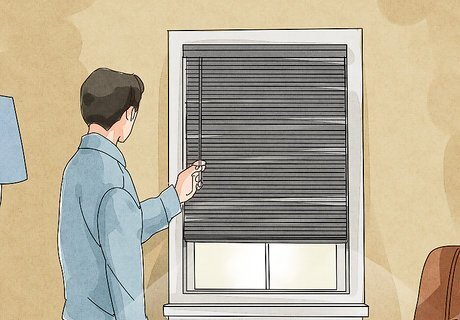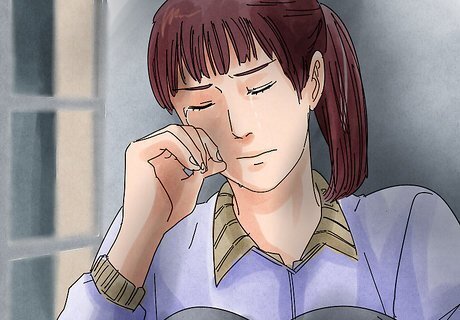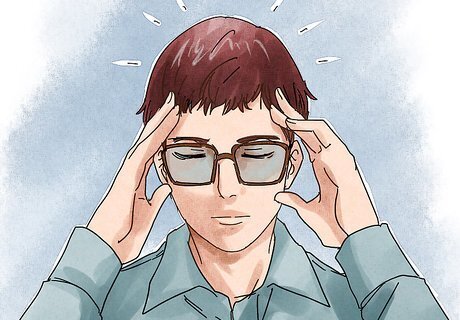
views
Displaying Migraine Symptoms

Complain of head pain. Migraines typically begin with a throbbing or pulsing pain in your head, usually limited to one side or specific area. Tell your classmates, teacher, coworkers, or boss that you have head pain, and point to or massage a single area of your head to make your complaint more convincing.

Reduce the amount of light and sound in your location. Migraines are often exacerbated by bright lights or loud sounds. Dim or turn off the lights, if possible, to show your sensitivity to them. Close your office door or turn your music off to reduce the amount of noise in your area. If you aren’t able to change the light or noise level, such as if you’re in class, put on sunglasses or cover your ears to show your distress.

Act dizzy or lightheaded. Some people who suffer from this condition get lightheaded or even faint during a migraine attack. Close your eyes and rest your head on your desk. When walking or standing, reach out for something sturdy nearby to hold on to. Say something like, “Whoa, I just got really dizzy.”

Pretend to be nauseous. Migraines often cause nausea or vomiting. Hold your stomach, moan about feeling sick, or make frequent trips to the restroom. You could also ask around for mints, which are said to reduce nausea. Never take medicine for a condition you do not actually suffer from!

Complain of blurred vision. Many people who suffer from migraines have blurred vision or vision changes during an attack. Frequently blink, rub your eyes, or squint at what you’re supposed to be looking at. Say something like, “I can’t see the reports very well,” to your supervisor.

Get extra rest. Sleeping can sometimes reduce the severity of a migraine. If you’re faking a migraine while at home with your parents, tell them you need to rest. Go in your room, shut the door, and turn off the lights. Lay in bed and discreetly play with your phone or simply daydream. Refrain from listening to music or watching television, as these would make an actual migraine worse.
Making it Believable

Mention symptoms the day before. If you’ve really planned out this episode of faking sick, you can mention that you are suffering from pre-migraine symptoms the day before you plan to fake a migraine. Such symptoms include constipation, food cravings, neck stiffness, mood changes, frequent yawning, and increased urination.

Display one symptom at a time. If you go from being perfectly fine to totally sick, people probably won’t believe you. Instead, mention head pain, then wait a while before complaining of light sensitivity or dizziness. Gradually increase the amount of symptoms you show or tell others about.

Look and act the part. People who are in the midst of a migraine don’t look happy and relaxed. Wrinkle your brow, rub your head, muss your hair, remove your makeup, or take other measures to ensure you look like you’re sick. Pretend you have lost your appetite, isolate yourself from your peers, and move slowly to solidify the act that you aren’t feeling like your usual self.

Ask to get out of your obligations. Once you’ve shown the symptoms, make your move. Ask your boss to head out early, tell your teacher you need to go to the nurse, or explain to your friend that you can’t make the engagement. Say something like, “I’m suffering from a migraine today and need to stay home and rest. I’m sorry I can’t make it to the gallery opening with you.”

Show your symptoms until you’re home or off the hook. If you complain about blurred vision, then speed off in your car, people may know you’re lying. Instead, call for a ride or take the bus home. Keep up the act until your parents, teachers, or boss are out of sight.

Don’t tell your classmates or coworkers the truth. Though you may think your friends will have your back, they may slip up and tell someone else you were faking—and that person may tell your boss or teacher. Remember to stay off social media, too, as that Instagram pic of you at a concert or out shopping later that same day is sure to blow your cover!


















Comments
0 comment